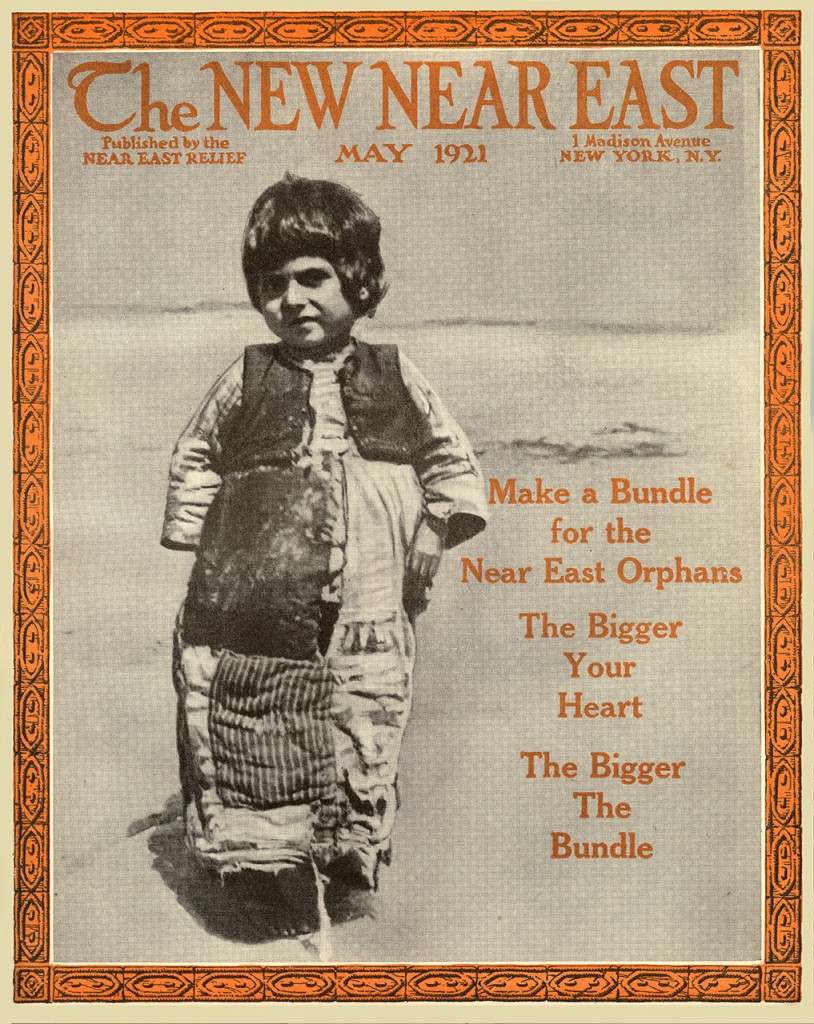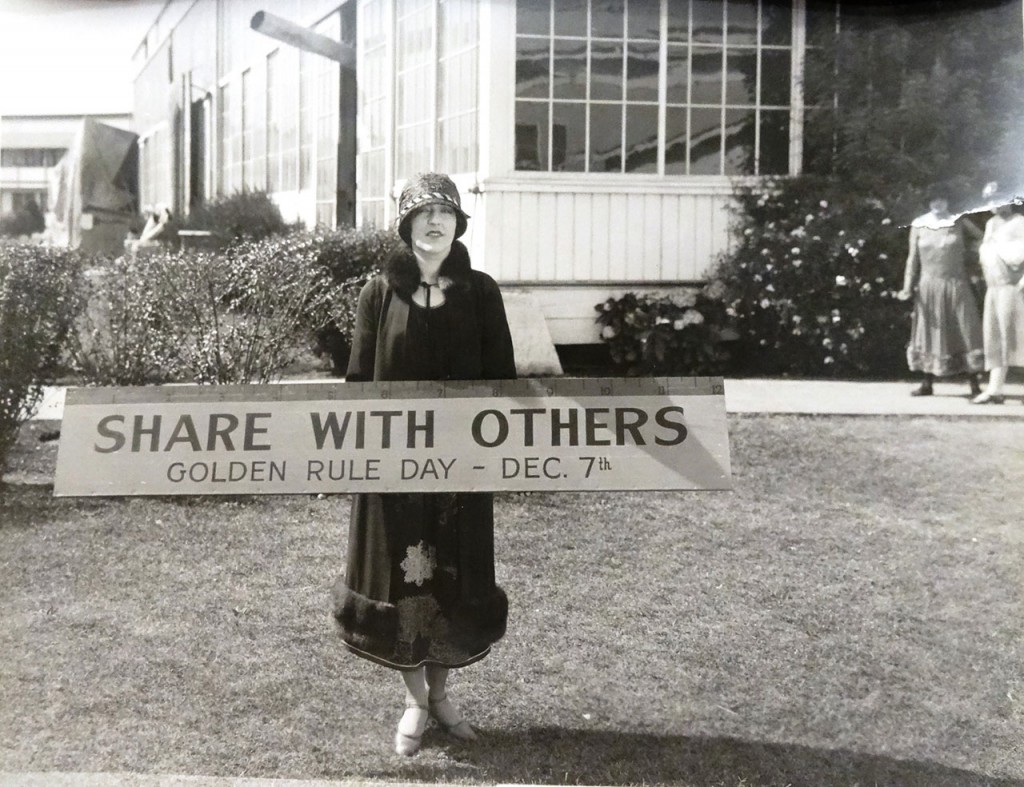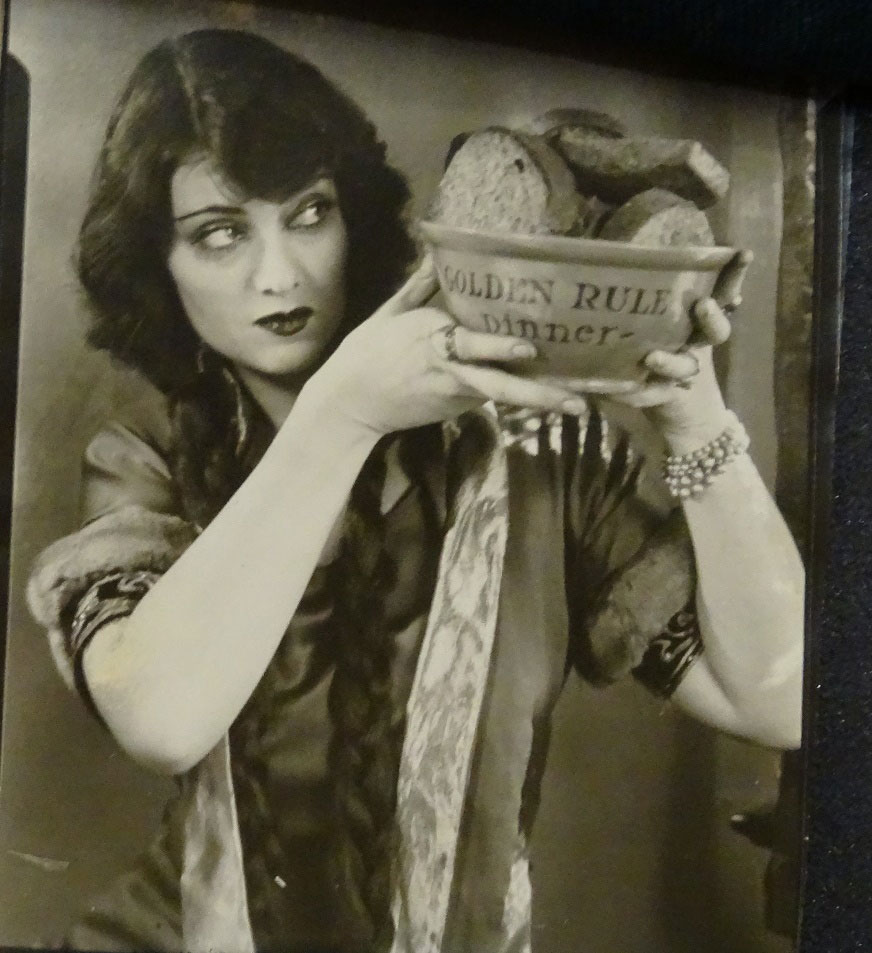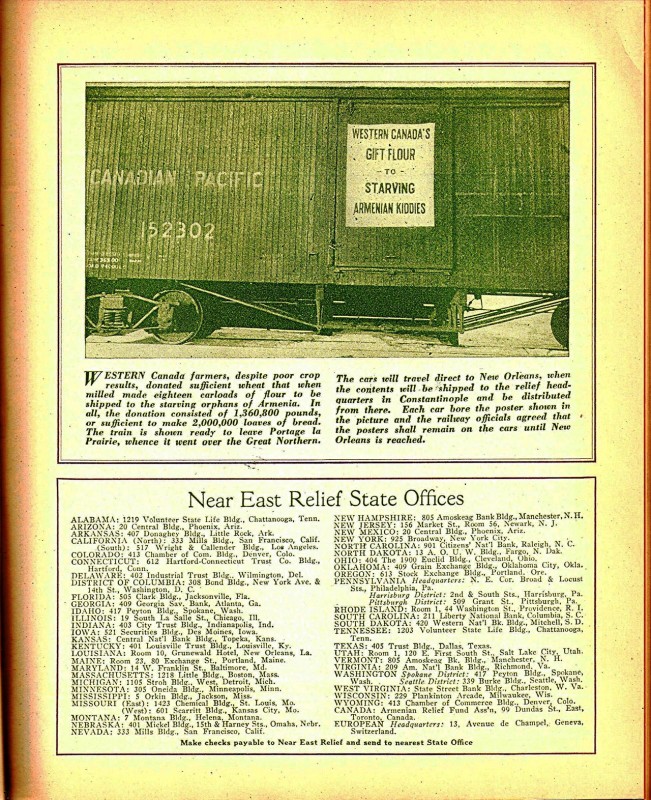In the Spirit of Giving
The task of supplying and sustaining so many orphanages across the Near East was a logistical, financial, and organizational feat for the Near East Relief. Finding reliable sources of food, clothing, and medicine presented a challenge for relief workers that called for creative solutions. In order to meet these needs, NER implemented a strategy that utilized foreign giving campaigns in an unprecedented way, forever changing the landscape of philanthropic work and humanitarian efforts in the United States and abroad.
During his time as Ambassador to the Ottoman Empire, Henry Morgenthau witnessed first-hand the atrocities committed against Armenians, Greeks, and Assyrians at the hands of the Ottoman government. In response, Cleveland H. Dodge – along with other prominent Americans- formed the Committee for Armenian and Syrian Relief (ACASR) with the goal of raising money for direct relief.

"Lest We Perish" poster used to raise money for ACASR.
To raise such a large amount of money, the ACASR used a completely revolutionary format for fundraising known as citizen philanthropy. Today, citizen-based philanthropy is quite common, but in 1915, it was almost entirely unheard of on such a large scale. Throughout the course of its work, ACASR, later known as Near East Relief and now as the Near East Foundation, used several different giving campaigns.
Bundle Day
One of the most successful campaigns run by NER was known as ‘Bundle Day’. Meant to address the needs of thousands of refugees left in nothing but rags, Bundle Day called on volunteers to gather clothes and shoes to send east.

'Bundle Day' advertisement on the cover of the New Near East Magazine, 1921
Organizations like the Knights of Columbus, the Rotary Club, and the Boy Scouts of America utilized their influence within their communities to drum up support and volunteers. Prominent women in the community would oversee collection stations to galvanize more support, while local business owners donated their trucks and resources for collecting the bundles.
Image Left: Knights of Columbus on ‘Bundle Day’ in Rochester, NY.

Upon arrival in the Near East orphanages, women and young girls – who worked as seamstresses- made repairs to the bundles, converted unusable items into new pieces of clothing, and unraveled damaged clothing for use in carpets to sell. The scarcity of usable clothing and the lack of a textile industry following World War I meant that not only did the bundles provide clothing to those who desperately needed it, but also provided critical jobs for refugee women and children left devastated by the Armenian Genocide.
To see more images of Bundle Day, click here.
Image Right: Women unravel clothing donated on Bundle Day to use in carpets

Even Hollywood got involved. Film Star Charles Raye donates used clothing for Bundle Day, 1924
The Bigger your bundle, the bigger your heart!
Golden Rule Sunday
In addition to clothing and shoes, the refugees in NER orphanages were in desperate need of food. To meet these needs, NER continued utilizing several giving campaigns and appealed to American citizens to donate whatever they could to help feed the thousands of children who called the orphanages home. One such campaign was Golden Rule Sunday.
Launched by Charles V. Vickrey in 1923, Golden Rule Sunday asked families to eat a meal similar to those served in NER orphanages and then to donate the money they would have otherwise spent to the relief effort.

Film Star encouraging participation in Golden Rule Sunday
The success of the first Golden Rule Sunday inspired NER to make it an annual event that eventually reached former President Woodrow Wilson, then President Calvin Coolidge, and famed captain of industry John D. Rockefeller. Hollywood became involved as well, catapulting the campaign globally, where it spread to over 50 participating countries.
To learn more about Charles V. Vickrey and Golden Rule Sunday, click here.

Film star holding bowl labeled with Golden Rule Sunday
Milk Week
One of the most important resources collected by NER was condensed milk. Milk was a critical source of nutrients for children and was a vital part of their daily meals, along with bread and, occasionally, protein if the relief workers could find enough. These resources were scarce for refugees and as the numbers of children grew, NER embarked on another giving campaign.

Condensed milk campaign plan
Instrumental to this effort was film star Jackie Coogan. Using his appeal to young fans, the campaign encouraged children to donate cans of condensed milk and other nonperishable goods. As a result of Jackie Coogan’s Children’s Campaign, he eventually traveled to the Near East with a cargo ship holding more than $1 million worth of cargo, a large portion of which was condensed milk.
To learn more about Jackie Coogan and the work he did for Near East Relief, click here.
A poster featuring Jackie Coogan asking for public donations during Milk Week, 1924

Jackie Coogan posing in front of the Leviathan, the ship that carried more than $1 million worth of supplies to the Near East, 1924
Grain
The situation in the Near East required resources of all types in order to provide aid to the refugees desperately in need. Bread, like condensed milk, was a staple of the daily diet for orphans and was eaten at every single meal. To meet the needs, the daily demand for flour was immense. NER once again called on the American people to provide what they could.
Daily flour delivery

The need was so great that other countries got involved as well. Canadian farmers were able to donate enough flour to make 2 million loaves of bread, despite poor crop yields.
Image Right: Train carrying Canadian flour donations
Hoping to appeal to farmers in the south and midwest, NER asked for donations of bundles of grain that could be turned into flour. To maintain continued donations from a population that had been asked to donate so much already, local grain donation committees employed novel and innovative ways to inspiring citizen involvement.
In Missouri, local leaders created a campaign that asked local members of the community to help fill the ‘Largest Grain Sack in the World’ before the coming winter to help keep the orphans in the Near East alive. This unique method inspired continued local support and ensured that the refugees in the Near East received supplies they so desperately needed.

Near East Relief campaign in Missouri to fill 'Largest Grain Sack in the World'
The legacy of the work done by NER during this time cannot be underestimated. The broad, nationwide appeal that sought to raise funds directly from the general population was the first of its kind and paved the way for citizen philanthropy, a model for humanitarian assistance that appeals to the masses to provide funds for overseas relief efforts now used by non-profits around the world.
Today, the Near East Foundation continues this century long philanthropic tradition with its work encouraging social and economic development in the Middle East and Africa.
How can you become a part of this long-time tradition? This Thanksgiving, in the spirit of giving back to those in need, please donate to the Near East Foundation as we continue our work of documenting the past and working towards a brighter future.
